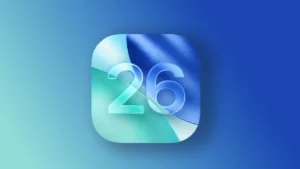Many users who update to iOS 26 find their iPhone feels slow, laggy, and generally unresponsive, with some even saying it feels like a different brand of phone. This frustrating experience, as described in this Apple Community discussion, is a common complaint after major software updates. The slowdown is typically caused by the iPhone performing intensive background tasks to integrate the new system, but it can also be a result of software bugs, low storage, or apps that haven’t been optimized for the new OS.
In this article:
ToggleWhy Your iPhone is Slow After an iOS Update
After a major update, your iPhone needs to perform significant “housekeeping” in the background. It re-indexes all your files for Spotlight search, scans your photo library for new features, and re-optimizes your apps. These processes are resource-intensive and can make the device feel sluggish for a few hours or even a couple of days. Additionally, the initial public release of a new iOS version often contains bugs and performance issues that Apple addresses in subsequent minor updates (like iOS 26.0.1).
How to Fix a Slow and Laggy iPhone on iOS 26
Follow these steps to diagnose and resolve performance issues on your iPhone. It is recommended to try them in order.
1. Wait a Day or Two
The most common cause of post-update lag is temporary. The best initial step is to simply wait. Keep your iPhone connected to Wi-Fi and power for a night or two to allow it to complete all its background indexing and optimization tasks. Performance will often return to normal on its own.
2. Update to the Latest iOS Version
Apple quickly releases follow-up updates to fix bugs and performance problems found in the initial release. Installing the latest version is the most effective way to resolve known issues.
- Go to Settings > General > Software Update.
- If an update (e.g., iOS 26.0.1) is available, tap Download and Install.
3. Force Restart Your iPhone
A force restart clears your iPhone’s memory and can resolve temporary software glitches that cause lag.
- Press and quickly release the Volume Up button.
- Press and quickly release the Volume Down button.
- Press and hold the Side button until the Apple logo appears, then release.
4. Update Your Apps
App developers need to update their apps to ensure they are fully optimized for a new version of iOS. Outdated apps can cause performance problems.
- Open the App Store.
- Tap your profile icon in the top-right corner.
- Tap Update All to install pending updates.
5. Free Up Storage Space
An iPhone with very little free storage will run slowly, as the operating system needs space to manage temporary files. Aim to have at least 10-15% of your total storage free.
- Go to Settings > General > iPhone Storage.
- Follow the recommendations to offload unused apps or delete large files like videos.
6. Limit Background App Refresh
This feature allows apps to update their content in the background, but it also consumes system resources. Limiting it can improve performance and battery life.
- Go to Settings > General > Background App Refresh.
- You can either set it to Off entirely or select individual apps to disable.
7. Reduce Visual Effects
If you notice lag specifically with animations, like when opening or closing apps, reducing motion effects can make the interface feel much faster.
- Go to Settings > Accessibility > Motion.
- Turn on the toggle for Reduce Motion.
8. Check Your Battery Health
A significantly degraded battery can cause iOS to throttle your iPhone’s performance to prevent unexpected shutdowns.
- Go to Settings > Battery > Battery Health & Charging.
- If Maximum Capacity is below 80%, your iPhone’s performance may be limited. Consider a battery replacement.
9. Reset All Settings
This step restores all system settings to their factory defaults without deleting your personal data. It can resolve lag caused by a misconfigured setting.
- Go to Settings > General > Transfer or Reset iPhone.
- Tap Reset > Reset All Settings. You will need to re-enter Wi-Fi passwords and customize your settings again afterward.
If none of these solutions work, contact Apple Support.


